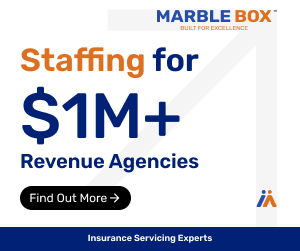By: AgencyEquity.com
Now that the calendar has closed the book on 2024, independent insurance agencies hope for brighter prospects. In many ways, they will find them.
2024 was a difficult year, particularly for homeowners insurance in catastrophe-prone areas. Insurers dramatically hiked premiums where they could. Where regulators rejected higher rates or allowed insufficient increases, insurers became very selective about new accounts and canceled existing policies.
The January 2025 wildfires in the Los Angeles area will pressure insurers’ underwriting results; estimates of insured losses are as high as $20 billion. However, a report from S&P Global Ratings projected that insurers and reinsurers will be able to absorb the losses without much trouble. The capital built up from premium increases in 2024, coupled with the reduced presence or outright withdrawal of major carriers from the market, will limit the damage to bottom lines.
However, there are glimpses of positive news. State insurance regulators in many parts of the country have come to realize that insurers need rate relief if they are to remain viable. In California, the governor ordered the insurance department in the fall of 2023 to address poor market conditions. Last October, Florida reported that national homeowners carriers were re-entering the market, increasing competition, and leading to 15 carriers filing rate decreases. MarketScout reported that personal lines rate increases moderated and some homeowners premiums actually decreased in the fourth quarter of 2024. Swiss Re noted recently that insurers have begun increasing spending on ads and cutting rates.
Meanwhile, rate increases have slowed considerably in commercial lines, with some lines seeing growing competition. Consulting group Woodruff Sawyer points to improved industry profitability, lower consumer inflation, and higher investment returns as factors likely to stabilize commercial lines pricing. MarketScout said that the yearly rate increase in commercial slid from 4.6% to 3.75% last year, with the fourth quarter coming in at only 2.6%. A.M. Best is predicting a stable commercial lines market in 2025, with most insurers making underwriting profits. Alera Group expects flat premium growth for Workers’ Compensation and Employment Practices Liability, and slight decreases for public and private Directors and Officers Liability. Premiums for Cyber insurance are also falling.
The war for insurance talent will continue unabated. Idex Consulting reported that three-quarters of employers plan to hire over the next 12 months, but half of them expect a shortage of qualified applicants. The same report showed 60% of employees are looking to change employers this year. The reasons: Unhappiness with work conditions and pay. 30% said their salaries have stayed flat or declined in the last 12 months. Meanwhile, 400,000 U.S. insurance industry employees are expected to retire by 2026. More attractive compensation packages and flexibility on work arrangements may be needed.
Technology spending will grow at a faster rate in 2025, according to Forrester, at an 8% clip. Much of that will be spent on tools that incorporate generative artificial intelligence (AI) capabilities such as natural language understanding, speech generation, and the ability to conduct human-like conversations. While most agencies might not purchase these systems for themselves, they are likely to encounter them more often when interacting with their carriers and wholesale brokers and, increasingly, with their commercial clients.
Cybersecurity will grow in importance as criminals devise more sophisticated methods for accessing data. In the final few months of 2024, the New York State Department of Financial Services warned companies to beware of social engineering attacks on information technology (IT) help desks; threat actors working on behalf of the North Korean government; and attacks enhanced by AI. Agencies may need to raise cybersecurity awareness among employees, especially regarding social engineering attacks.
The new year will be a challenging one for independent agencies. However, it should bring more stable markets and more opportunities for growth.
















